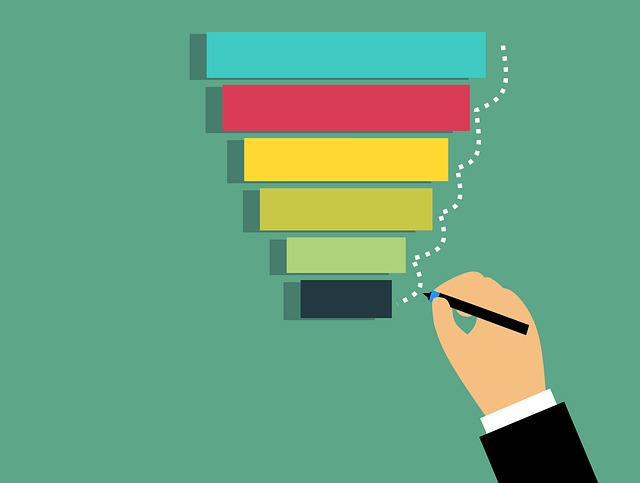
The terms "funnel" and "pipeline" are often used interchangeably when discussing the stages of a sales lead’s or a prospective buyer’s purchasing journey. While these terms are related, they serve distinct purposes, particularly when it comes to B2B lead generation and managing a comprehensive sales strategy. Whether you're dealing with industrial marketing, outsourced sales development, or manufacturing construction, understanding the key differences between a sales funnel and a sales pipeline can significantly improve your ability to nurture leads, optimize customer acquisition, and drive more business development.
What is a Sales Funnel?
A sales funnel is a visual representation of the stages a prospective buyer goes through on their path to making a purchase. Its name is derived from its shape, which starts wide at the top and narrows down as leads move through each stage of the funnel. The wide opening at the top represents all the leads entering your funnel, and as they are qualified, nurtured, and moved through each stage, the number of leads narrows down until only the most qualified leads remain, ready for conversion. This structure is essential for industries like manufacturing lead generation, where lead nurturing plays a pivotal role in turning prospects into loyal customers.
The sales funnel stages typically include:
-
Awareness: Potential buyers become aware of your product or service, often through industrial marketing services or strategic prospecting. This stage is where B2B lead generation agencies help your company capture attention in markets like forklift marketing, industrial construction projects, or food and beverage construction.
-
Lead Acquisition: Once awareness is established, leads start engaging with your company by filling out forms, subscribing to newsletters, or requesting more information. This is where appointment setting services and outsourced sales development can help drive engagement.
-
Prospect: At this stage, potential buyers express genuine interest and become qualified prospects. Their needs are identified, and they are positioned for further lead nurturing, whether through email marketing or direct follow-ups, setting the groundwork for a sale.
-
Qualification: This is a critical stage where leads are assessed for their readiness to move forward. Industrial sales strategy often focuses on aligning a prospect’s needs with the company’s offerings. Qualification is especially vital for industries like material handling sales and forklift sales, where technical understanding is essential.
-
Proposal: After qualifying the prospect, the sales development team presents a formal proposal. In sectors like manufacturing construction or plant closings, this stage involves customized solutions that meet the buyer’s operational demands.
-
Closing the Sale: If everything aligns, the final step is closing the deal. Effective lead nurturing and sales strategy play a huge role in this, especially in complex industries like compressed air systems or logistics, where trust and long-term relationships are critical for ongoing business development.
What is a Sales Pipeline?
While a sales funnel focuses on the quantity of leads in each stage, a sales pipeline focuses on the progression of those leads through the stages of the sales process. The sales pipeline is a linear process that details the specific steps each prospect takes from initial contact to the closing of a sale. It’s often used in industries like industrial lead generation or material handling marketing, where precision and timing are key.
Key stages in a sales pipeline include:
-
Lead Qualification: Once a prospect enters the pipeline, they undergo a rigorous qualification process. For example, manufacturing leads are scrutinized for fit, budget, and readiness, ensuring that only serious leads progress further.
-
Initial Communication: Here, appointment setters or sales development teams reach out to prospects, setting up crucial meetings or calls. This stage is vital in industries like food and beverage construction or industrial forklift marketing, where detailed discussions are necessary before moving forward.
-
Proposal Stage: After the initial communication, prospects receive a tailored proposal. In industrial business development or manufacturing construction, this proposal could involve a custom solution that addresses specific operational needs.
-
Closing the Sale: Just like in the sales funnel, the final stage in the pipeline is closing the deal. Here, outsourced business development teams ensure that all negotiations, terms, and agreements are finalized, leading to a successful sale.
Keeping the sales pipeline full is crucial. An empty pipeline will force your sales team to spend more time sourcing new leads rather than moving existing ones through the sales process. Industries that rely heavily on outsourcing lead generation—like manufacturing or industrial equipment sales—need to ensure a steady flow of qualified leads in the pipeline to maintain momentum.
How to Get More Quality Leads for Your Sales Pipeline and Sales Funnel
Filling your sales funnel and pipeline with high-quality leads is vital for long-term growth. This is where lead generation agencies come into play, offering services that help identify business opportunities in sectors like manufacturing lead generation or industrial construction projects. For example, companies like SalesLeads track businesses that are expanding, relocating, or investing in new equipment, providing a steady stream of industrial leads to fill your pipeline.
The sales pipeline and sales funnel can go a lot faster when you have high quality sales leads. One way to acquire actionable sales leads is through SalesLeads. Our researchers continually track companies that are expanding, relocating, and modernizing equipment. When we uncover an identified project, we create a Project Report and get that to you ASAP. The content includes, but not limited to, project summary, project scope, size, SIC code, contact name, phone numbers, email address and much more. Once you call the contacts from the Project Report, you’ll be able to begin to place the sales lead into the sales pipeline and sales funnel.
These reports are comprehensive, often including details like project scope, contact information, and even industrial reports that allow your team to dive deep into potential projects. Whether you’re focusing on forklift sales, customer acquisition, or manufacturing outsourced sales, the key is having the right data to act on.
By utilizing specialized services like outsourced appointment setting, industrial prospecting, and lead nurturing, your team can drive more opportunities into the pipeline, allowing for more focused attention on the most qualified prospects and better chances of closing deals.
Conclusion
Although often confused, sales funnels and sales pipelines serve distinct roles in your business development strategy. The funnel provides an overview of how many potential customers are at each stage, whereas the pipeline focuses on the progression of leads through those stages. For industries like material handling marketing, forklift sales, and manufacturing leads, combining both models allows for more effective lead generation, stronger customer relationships, and ultimately, more successful sales development.
Leveraging the strengths of both tools ensures that you’re not just attracting leads but nurturing and guiding them through a thoughtful process, from initial awareness to final conversion. By keeping a keen eye on both, you can improve demand generation, optimize sales strategies, and drive sustained growth across your business.
What to learn more? Get in Touch
Latest Posts
-
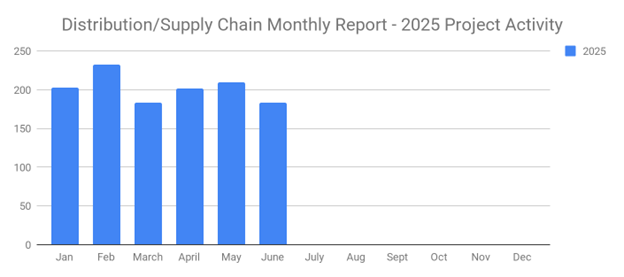
June's New Distribution and Supply Chain Planned Projects Return to March’s 183 Confirmed Figure
-
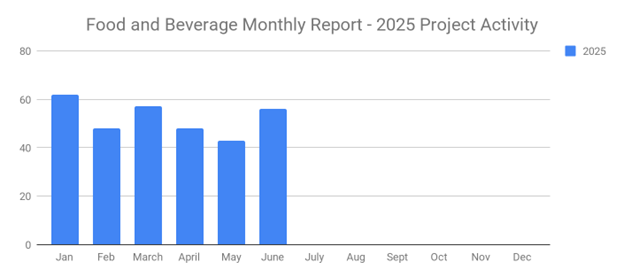
Food and Beverage Rebounds with 56 New Planned Projects Igniting Growth After Decline
-
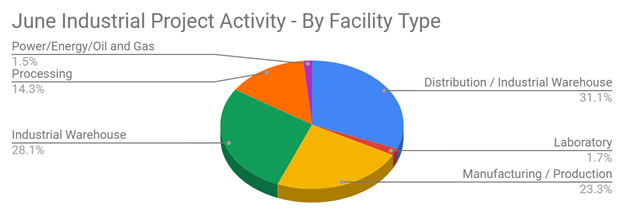
June 2025’s New Industrial Construction Projects Grew 7% Month-Over-Month
-
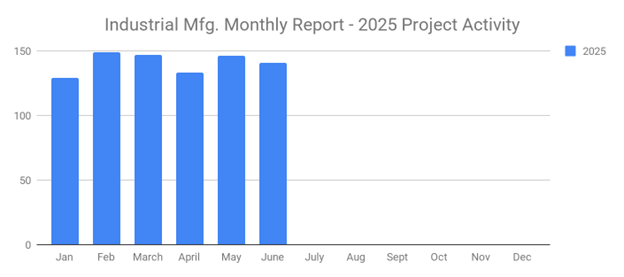
Q2 Industrial Manufacturing Soars 31% for Planned Projects Over $100M; June Planned Industrial Projects Hit 141

